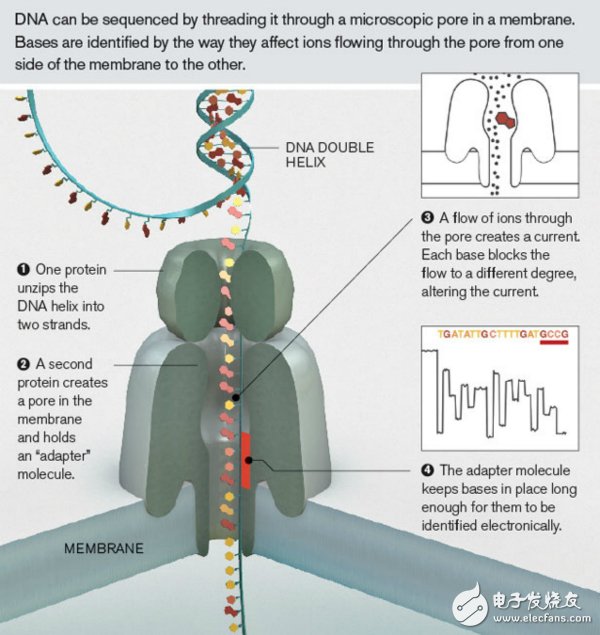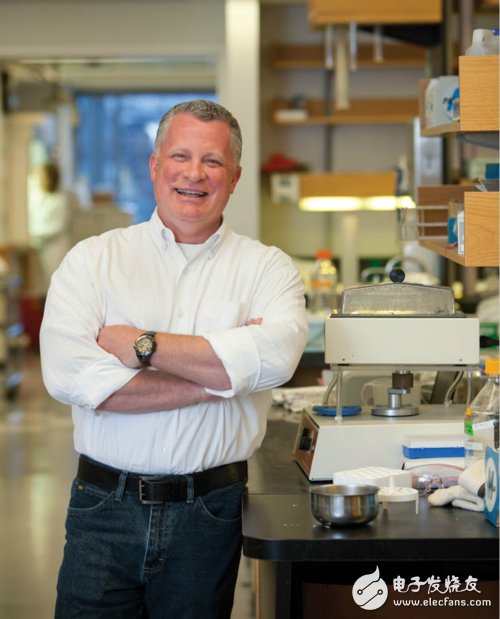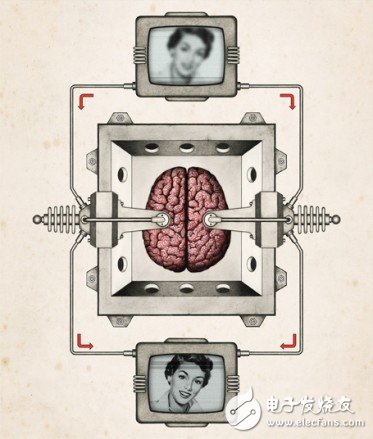Since 2001, the MIT Science and Technology Review has published “Top 10 Breakthrough Technologies†every year, namely TR10 (Technology Review 10), and predicts its potential for large-scale commercialization and its significant impact on human life and society.
These technologies represent the development frontier and future development direction of the current world science and technology, and reflect the new characteristics and new trends of the world's scientific and technological development in recent years, and will lead the research direction for the future. Many of these technologies have already entered the market, leading the development of industrial technology, and greatly promoting economic and social development and technological innovation.
As Jason PonTIn, editor-in-chief of the MIT Technology Review, said, the definition of breakthrough technology is very simple, that is, it can bring people high-quality technology solutions. Some technologies are the crystallization of engineers' genius ideas, while others are the masters of many attempts by scientists to solve problems that have long plagued them (such as deep learning). The purpose of the selection of “Top 10 Breakthrough Technologies†is not only to show people new innovations, but also to emphasize that human intelligence has enabled these innovative technologies.
Therefore, the arterial network will screen for scientific breakthroughs in the medical field from 2012 to 2016. Due to the rapid change of technology, it only combed within the last 5 years. In view of the length of the article, it will be divided into two parts, each introducing seven techniques. This article is the first one. These technologies are created to solve problems and will greatly expand the potential of human beings. They may also change the face of the world and deserve special attention in the future.
1. Nanopore sequencing (2012)
Flow chart of nanopore sequencing
It can read longer gene fragments, which helps to understand the complex regions of the genome.
Maturity: at least 10 years later
Breakthrough point: Pull single-stranded DNA through the protein pores to detect small changes in conductance when bases pass through
Importance: Genomic sequencing is faster, cheaper, and more convenient, opening the era of personalized medicine
The main player in the field: Oxford Nanopore
In the development of longitudinal observation technology, no technology is as slow as nanopore sequencing. In 1996, Daniel Branton of Harvard University, David Deamer of the University of California, and colleagues, published an article in the Proceedings of the National Academy of Sciences, PNAS, that the use of membrane channels to detect polynucleotide sequences. The idea of ​​sequencing using nanopore is very straightforward: let DNA bases pass through the nanopore one by one, while quickly identifying each base. Compared with other DNA sequencing methods, it does not require the use of fluorescent reagents to identify bases or knock out DNA molecules or amplified fragments, and can quickly detect gene translocations.
In 2005, Oxford Nanopore, founded by Bayley, Gordon Sanghera and Spike Wilcocks, validated the commercial capabilities of nanopore sequencing. The technology provides a way to make genome sequencing faster, cheaper, and more convenient, allowing doctors to create the era of personalized medicine as the most common sequencing method, but the accuracy rate needs to be improved.
Especially in 2012, Oxford Nanopore introduced MinION, a handheld nanopore sequencer that is easy to carry and inexpensive. It can read longer gene fragments. The average reading length of this platform is about 5kb, and the longest can reach 20kb, which helps to understand the complex regions of the genome. MinION can also be plugged into the laptop's USB port to display the data generation process on the screen. Recent studies have shown that MinION is quite practical, can accurately sequence small genomes (such as bacteria and yeast genomes), distinguish between closely related bacteria and viruses, and read complex regions of the human genome.
This year, Jingyue Ju of Columbia University and Professor George Church of Harvard University collaborated on a nanopore-based single-molecule synthesis-sequence (SBS) system to upgrade this sequencing technology to create high-throughput Single molecule nanopore sequencing platform. But scientists are currently improving the accuracy of this sequencing by slowing the speed of DNA sequences through the nanopore. After all, the technology is not yet mature.
2. Oviparous stem cells (2012)
Harvard University reproductive biologist Jonathan Tilly
Humans also have an egg-like stem cell like an animal such as a mouse, or can be an endless source of eggs.
Maturity: questioned
Breakthrough point: precise cell sorting technology, separation of ooggon stem cells from adult ovaries
Importance: A large number of ovarian stem cells are cultivated in the laboratory to treat female infertility and even delay premature ovarian failure
Major players in the field: Massachusetts General Hospital, OvaScience, Jonathan TIlly
Jonathan TIlly, a reproductive biologist at Harvard University, who also directed a reproductive biology center at the Massachusetts General Hospital, proved that humans also have an egg-like stem cell like an animal such as a mouse, or can become endless. The source of the egg. Because for a woman, after 40 years of age, the number and quality of eggs will decline, the discovery of "egg stem cells" is expected to provide a new method for the treatment of female infertility, and even delay the premature ovarian failure.
These oogonia stem cells are derived from the ovaries of adult women, indicating that women may still form new eggs after adulthood. If you can grow this oogon stem cell in the laboratory, it also means that there is an endless source of eggs in medical treatment. This finding challenges the traditional view that the number of female eggs has been limited at birth.
The Tilly team first demonstrated in 2004 that female mice can continue to produce oocytes after entering adulthood. Later, the Tilly team developed a more precise cell sorting technique and used this technique to isolate ooggon stem cells from adult ovaries. The resulting cells, like mouse oogonium stem cells, spontaneously form cells with oocyte characteristics. These oocytes possess the physical appearance and genetic expression patterns of oocytes in human ovaries.
Tilly said that the research is expected to be used to establish a human ovarian stem cell bank. The most important thing is to find ways to develop ovarian stem cells into mature human oocytes in vitro fertilization to improve the results of in vitro fertilization and infertility. Infertility provides new therapies. However, ovarian stem cells are still being questioned so far, and no newborns have been grown through oogonia stem cells.
Boston-based OvaScience is commercializing Tilly's work. The company's co-founders include venture capitalist Christoph Westphal and Harvard University anti-aging researcher David Sinclair, who founded Sirtris PharmaceuTIcals and sold it to GlaxoSmithKline for $720 million in 2008. OvaScience raised $43 million in 2012 to pursue stem cell fertility treatment and other applications, and the company is currently operating well.
3. Memory transplantation (2013)
Memory transplantation is still subject to many questions
Not too far away, patients with severe memory loss can get help from electronic implants
Maturity: not mature yet
Breakthrough point: Using memory data, the signal is converted into a long-term memory by the silicon chip
Importance: Rehabilitation transplantation for patients with long-term memory loss
The main player in the field: Theodore Berger
The idea is so bold, so far beyond the mainstream of neuroscience, Theodore Berger is the visionary pioneer of the industry. He is a biomedical engineer and neuroscientist at the University of Southern California at Los Angeles. He envisions that patients with severe memory loss can get help from electronic implants in the not too distant day.
In people with brain-affected Alzheimer's disease, stroke, or injury, a disrupted neural network typically prevents long-term memory formation. For more than two decades, Berger designed silicon chips to simulate the signal processing that these neurons do during normal work, a task that allows us to remember experience and knowledge in less than a minute. In the end, Berger wants to restore the ability to create long-term memory by implanting such chips in the brain.
Berger studies information like actual neurons through electrodes and electrodes connected to the outside of the mouse and monkey brain, and succeeds in neuroprosthetic surgery. Cochlear implants have helped more than 200,000 people hear by converting sound into electrical signals and sending them to the auditory nerve. Other researchers have achieved initial success in the artificial retina of the blind.
Berger also collaborated with US biomedical engineer Vasilis Marmarelis to begin manufacturing brain prostheses. They first used the hippocampus from the mouse to slice back. Knowing that the neuron signal moves from one end of the hippocampus to the other, the researchers send random pulses to the hippocampus, record the signals at various locations, see how they transform, then derive mathematical equations describing the transformations, and they are on the computer chip. These equations are implemented in . Using this data, Berger and his team modeled how signals were converted into a long-term memory.
Despite the uncertainty, Berger and his colleagues have been planning human research. He also collaborated with his university's clinicians to test the use of electrodes implanted on each side of the hippocampus to detect and prevent seizures in patients with severe epilepsy, and even help these patients find memories in the brain.
Sterilization Card Bags
Guangzhou Ehang Electronic Co., Ltd. , https://www.ehangmobile.com